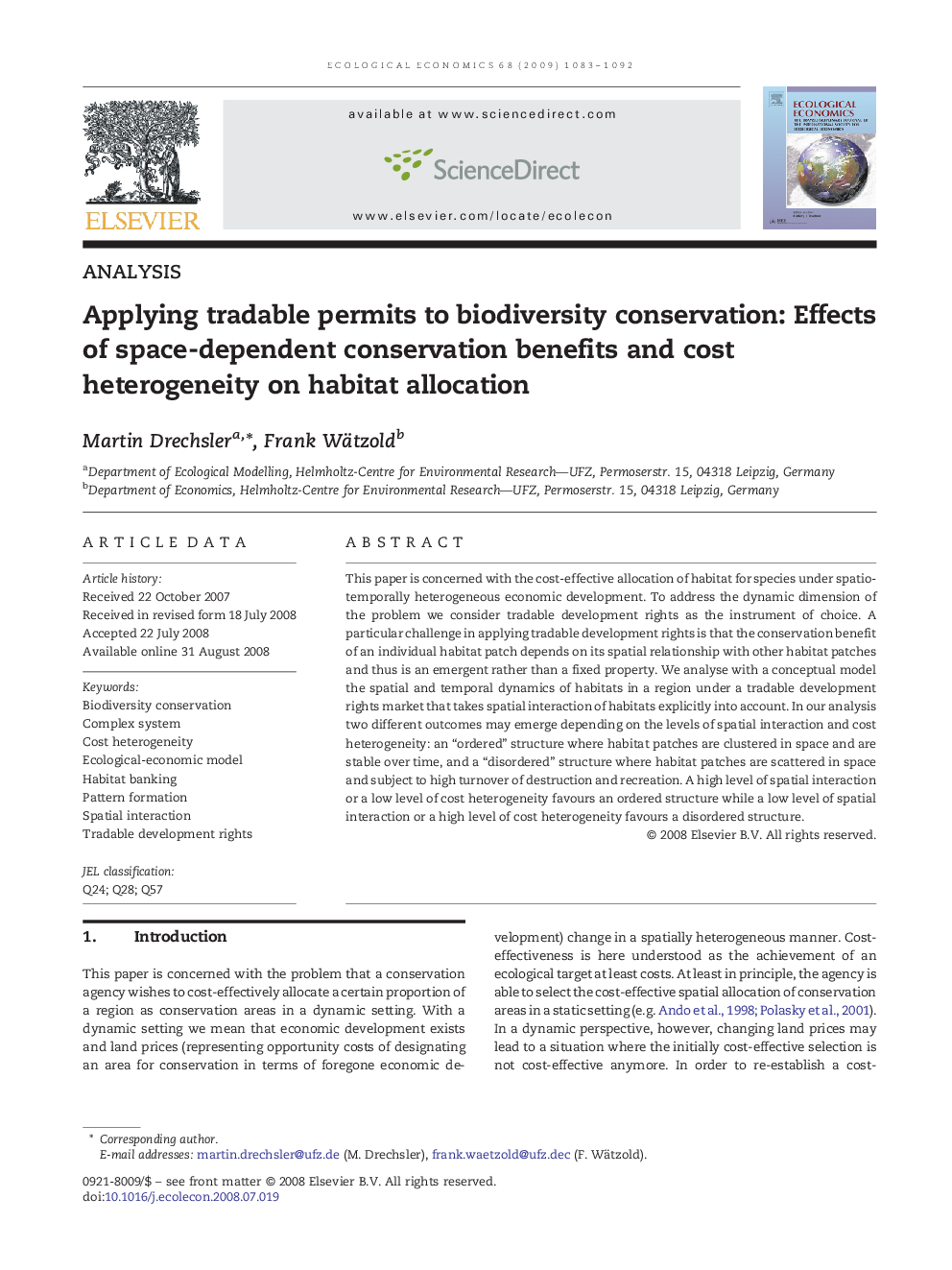| Article ID | Journal | Published Year | Pages | File Type |
|---|---|---|---|---|
| 5051375 | Ecological Economics | 2009 | 10 Pages |
This paper is concerned with the cost-effective allocation of habitat for species under spatio-temporally heterogeneous economic development. To address the dynamic dimension of the problem we consider tradable development rights as the instrument of choice. A particular challenge in applying tradable development rights is that the conservation benefit of an individual habitat patch depends on its spatial relationship with other habitat patches and thus is an emergent rather than a fixed property. We analyse with a conceptual model the spatial and temporal dynamics of habitats in a region under a tradable development rights market that takes spatial interaction of habitats explicitly into account. In our analysis two different outcomes may emerge depending on the levels of spatial interaction and cost heterogeneity: an “ordered” structure where habitat patches are clustered in space and are stable over time, and a “disordered” structure where habitat patches are scattered in space and subject to high turnover of destruction and recreation. A high level of spatial interaction or a low level of cost heterogeneity favours an ordered structure while a low level of spatial interaction or a high level of cost heterogeneity favours a disordered structure.
